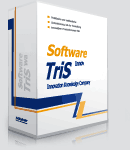|
|
 |
 |
 |
|
Capturing and Measuring True Customer Benefits
It is well understood that only customers can judge if an innovation will be useful or not. However direct use of "voice of the customer" for innovation too often leads to customer disappointment or market failures. What is wrong in this approach? Customer requirements and wishes are often vague, they often relate to already existing products or known solutions. Innovations that deliver exactly what customers request deliver no significant competitive advantage, rather only "me-too" products.
The TriS innovation process starts with the identification of customer benefits - customers true requirements and often-unsaid needs which are independent of currently known technical solutions.
In the next step we discover and calculate the measurable market or innovation potential of customer benefits in each selected customer group or market segment and then calculate the market potential of each benefit as a deciding factor of customer value. The benefits with highest market potential define the future measurable features of new products. From this, innovative customer-inspiring concepts can be systematically developed that lead to a significant measurable growth in customer value and satisfaction. The resulting customer-orientated market information will then be understood by customers, but undervalued by the competition, as they will not have applied the same thinking processes in developing their products.
| |
| |
Calculating Innovation Effects in Advance
Our experience through numerous innovation projects permits us to define the following targets for calculated customer value growth in a new product or service:
For value growth less than 3% innovation risk in the market is high.
For value growth between 4 and 7% compared with best in class sustainable innovation success is likely.
If customer value growth is 8% or more, significant innovation success ensues and often leads to a unique market position.
So called breakthrough innovations with extraordinary market success are achieved with product value growth approaching 15% or more.
| |
| |
Scenario Planning for Innovation Strategies and Concepts
TriS uses Scenario Planning to help anticipate and calculate the market opportunities of innovation concepts already in the very early stages of the innovation process - already in the phase where the innovation strategy and tasks are formulated. This approach structures the innovation activities, focusing them on the tasks essential for market success, reducing innovation costs and risk of poor investments.
| |
|




